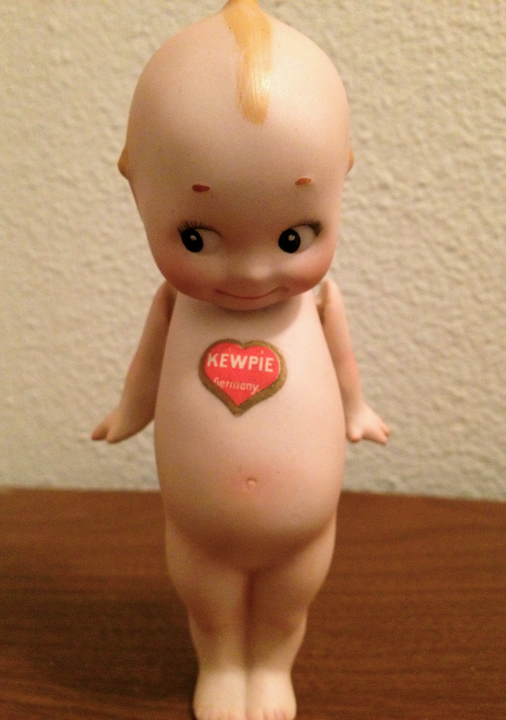One of the unique things introduced in the 20th century was “the popular fad introduced by comic characters.” Two of that century’s biggest such fads are connected by at least one coincidence: their creators shared a birthday.
The first such fad, in the US, was Kewpie Dolls. Kewpies were stylized babies with a topknot of hair sticking up. They first appeared as comic strip characters in the Kewpies strip that was published in several national magazines starting in 1909.
The Kewpies comic was created by Rose O’Neill, a commercial artist who was born in Pennsylvania in the US in 1874. She was already a successful illustrator when she moved to New York in 1893, and in 1896 she published a comic strip in Truth magazine, making her the first American woman to publish a comic.
By 1909 she was on the staff of a humor magazine, Puck, as well as doing commercial illustrations for products like Jell-O and other publications including Harper’s and Life. She also wrote books, including The Loves of Edwy. She illustrated them as well, although not to the extent of a “graphic novel.” She was also active in the women’s suffrage movement (in the US, women were not allowed to vote until 1920).

Early Kewpie Doll, about 1912. By Scottdoesntknow – Own work, CC BY-SA 3.0, https://commons.wikimedia.org/w/index.php?curid=28068185
O’Neill said the Kewpie characters came to her in a dream, and she named them based on the Roman god of love Cupid. The Kewpies comic strip was a big success, and in 1913 a doll company began making Kewpie Dolls. Those were an even bigger hit, and by the 1920s O’Neill was the highest paid illustrator in the US. She amassed a fortune of over a million dollars. She lived in Paris for several years, studying sculpture and other forms of art. When she returned to the US just before the Great Depression, she moved to Missouri where her family had relocated in the 1890s. O’Neill lived to be 69 and passed away in 1944…by which time Pierre Culliford was just 16 years old.
Culliford was also born on June 25, but in 1928 in Brussels, Belgium. His father was English and his mother Belgian, so he had English relatives. At least one of those cousins couldn’t pronounce “Pierre” properly, calling him “Peyo.” Culliford liked the nickname and adopted it as his professional moniker. Like Rose O’Neill, Peyo became a professional illustrator and contributed comics to magazines and newspapers. His first popular character was called Johan, and before long that character was joined by Peewit. In 1958 Johan and Peewit were joined by some other characters, who were blue. Peyo called them Smurfs.
The Smurfs soon eclipsed Johan and Peewit and got their own comic. By 1959 the Smurfs were already so popular that Smurfs merchandise began to be made. The first examples were plastic dolls very similar to Kewpies. The Smurfs reached the US in the 1970s, and an animated TV series began in 1981. The little blue folks eventually showed up in a 2011 movie as well, which included a character who was a researcher studying the Smurfs — the researcher’s name in the film was Peyo.
In real life, though, Peyo’s health began to fail in the 1980s and he died of a heart attack in 1992 at 64. He had already turned most of the work on The Smurfs over to the staff at his studio, which still exists; Peyo’s son Thierry now leads it and his daughter Véronique is in charge of merchandising.
You can find Kewpie dolls here and there, mostly in used-goods shops in the US (they were manufactured at least until the 1990s) — and there is an active community of collectors. Some of the early ones were signed by Rose O’Neill herself. If you’re interested in Smurfs, they’re still everywhere, and Peyo’s studio continues to produce Smurfs stories and characters.

Greedy Smurf and Smurfette from a park in Ankara. By Scottdoesntknow – Own work, CC BY-SA 3.0, https://commons.wikimedia.org/w/index.php?curid=28068185
